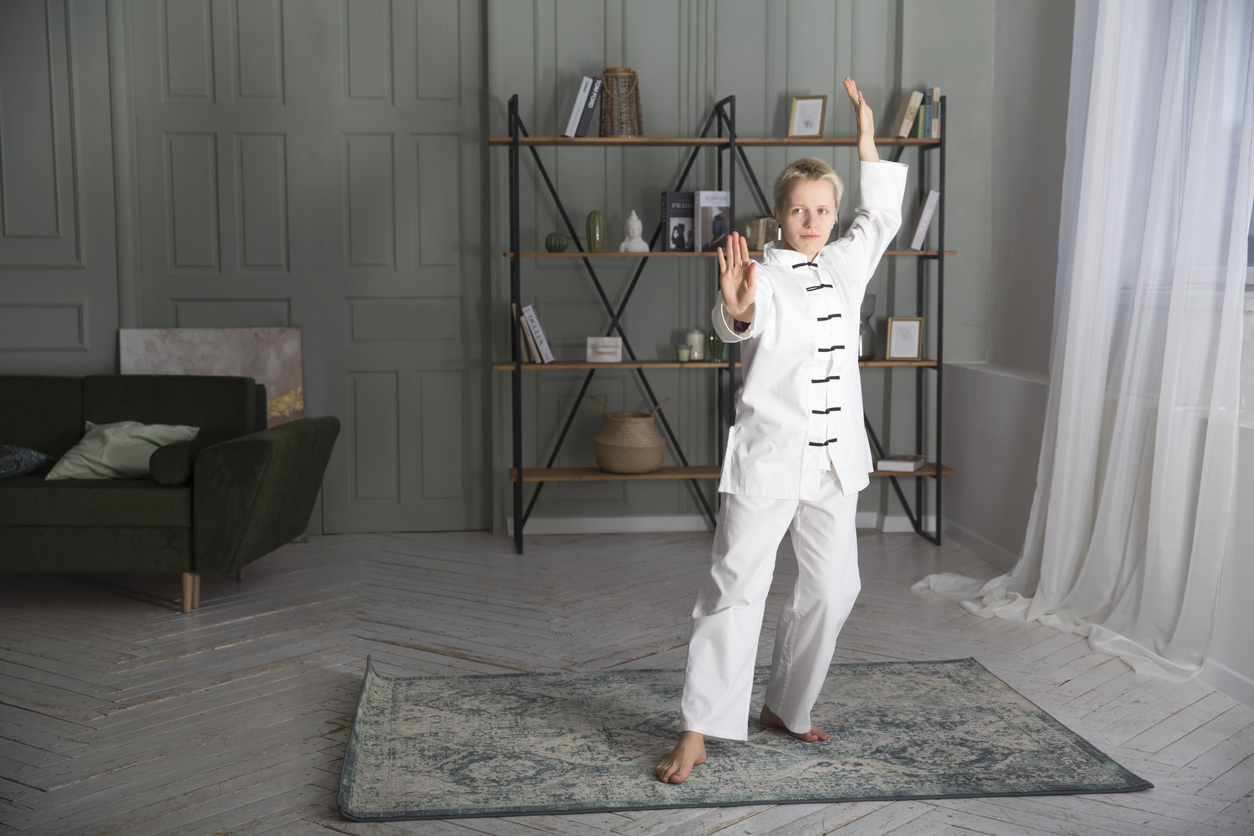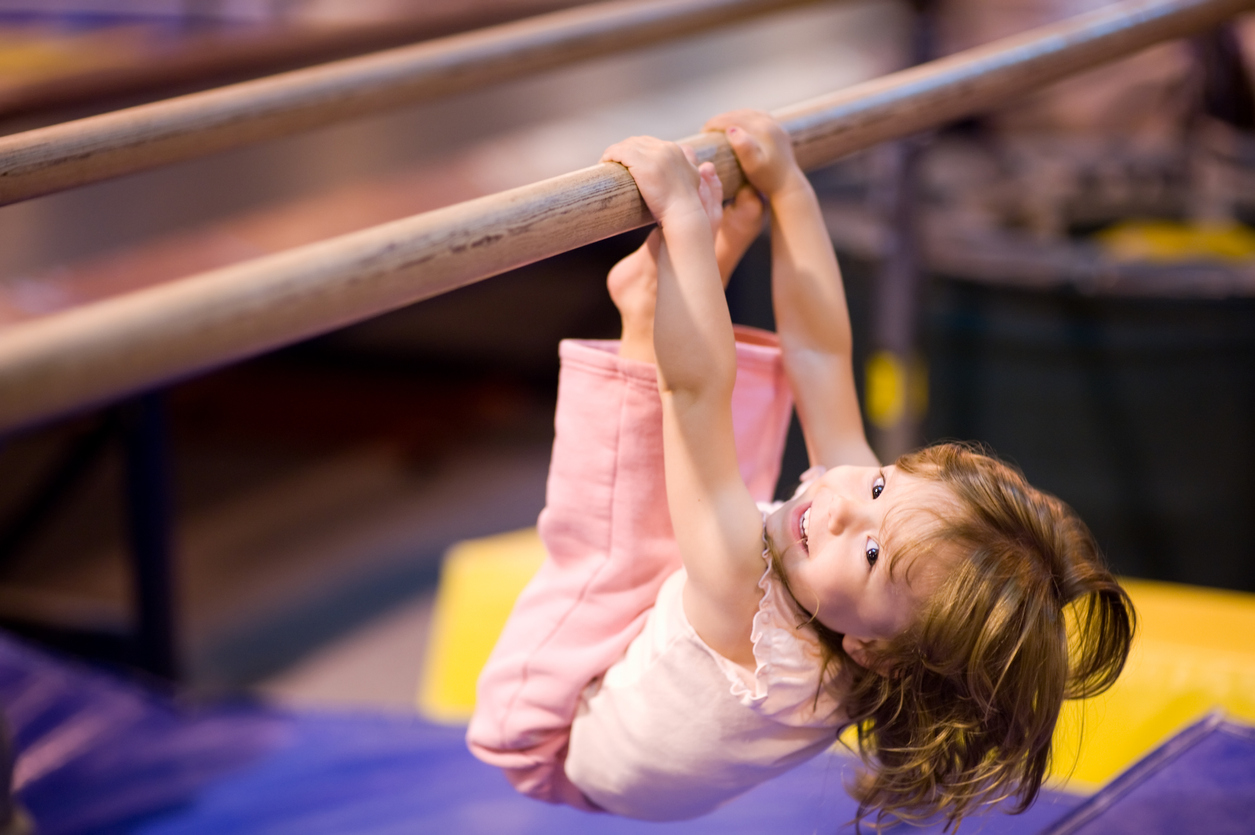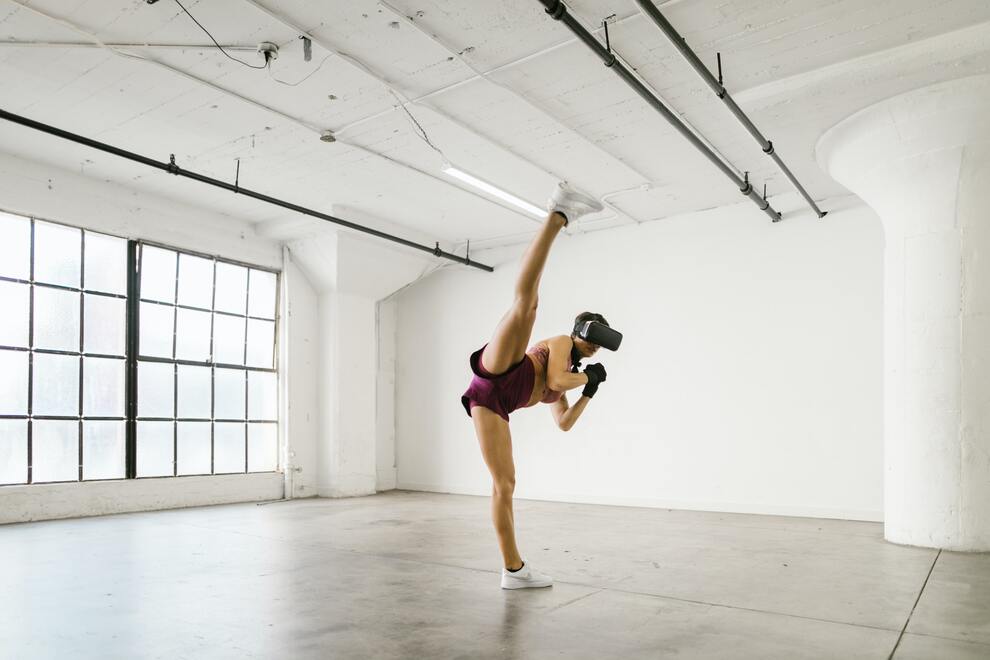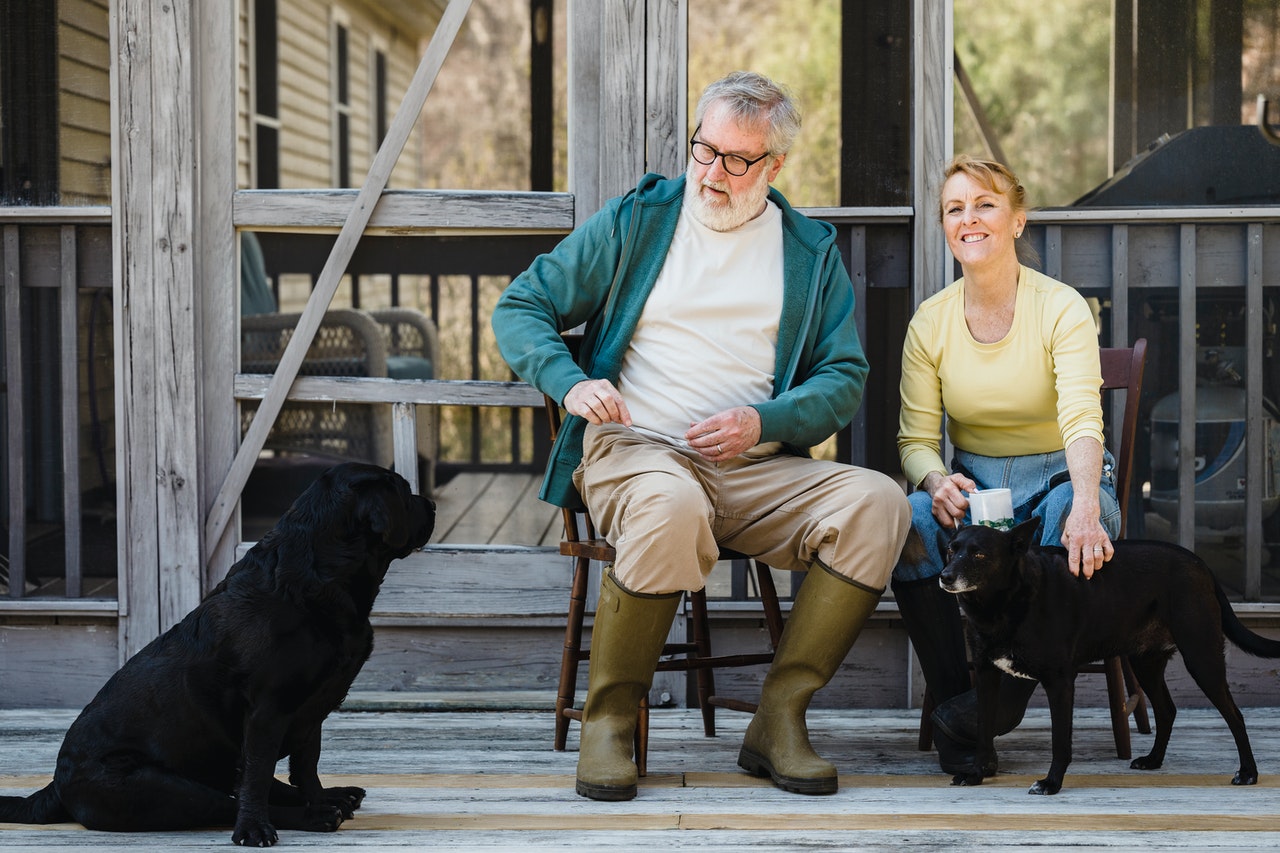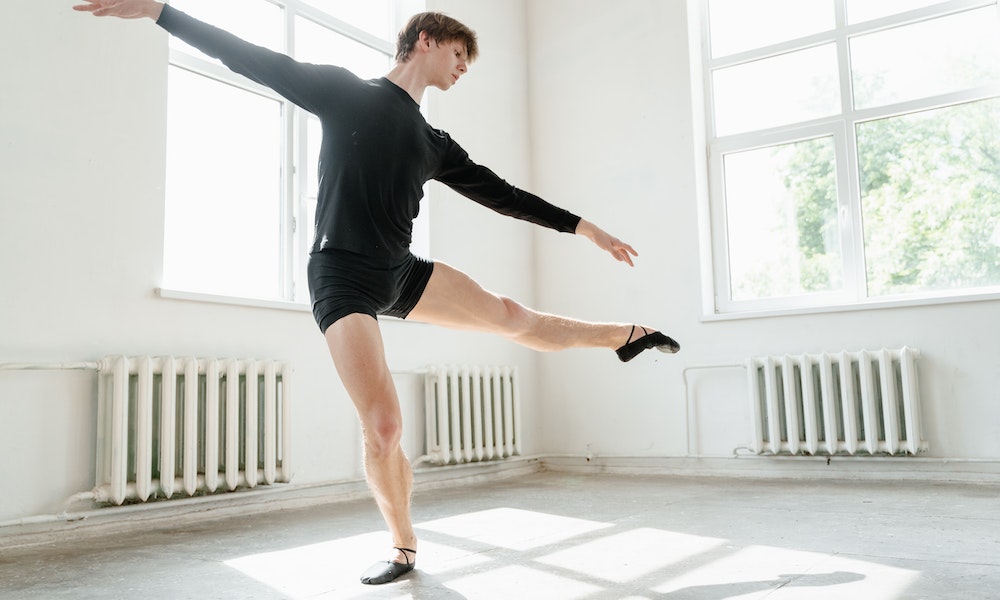While many people think of martial arts as flying kicks, ultra-fast punches, and super-high jumps, they are really a lot more than that. Martial arts are not only combat styles or self-defense techniques; they are disciplines for the mind, the spirit, and the body.
Practicing martial arts can come along with a long list of benefits, like more disciplined habits, a more positive mindset, conflict resolution knowledge, stress relief, and a more active life, among other benefits.
We contacted a group of experts in different martial arts styles and asked them to share with us tips and advice on the best ways to set up a space at home to get started with martial arts, as well as ideas on how to train solo at home. This is what they answered:
What kind of setup and gear do I need to practice Jiu-Jitsu at home?
To train Jiu Jitsu at home, you’ll need to join some online classes, get the necessary equipment, set up your training area, and so on.
Home training can help you maintain your fitness while spending more time with your family or honing your jiu-jitsu abilities. The tips below are perfect for strengthening your grappling capacities from the comfort of your own home.
1) Choose Your Home Training Location
Because random changes are terrible, choosing a peaceful place is the first step toward having practical jiu-jitsu training sessions at home.
2) Preparing Your Training Location
Equip the training room with the required equipment, such as mirrors, mats, gi, rashguard, etc. Furthermore, music from your mobile phone might encourage you early in your martial arts home training; subsequently, consider stereo.
3) Set a goal for your home BJJ training.
A jiu-jitsu home exercise may include strength and conditioning, solo drills, etc.
4) Improve Your Jiu-Jitsu Knowledge
A good jiu-jitsu practice, particularly for BJJ novices, occurs in dojos with at least one other training partner and under the supervision of trainers. However, if you study at home, you will be unfamiliar with this martial art.
Consequently, you should look for additional internet resources to augment your knowledge. For example, you may take BJJ online classes, follow specific jiu-jitsu YouTube channels and forums, read books, and so on.
5) Monitor Your Progress
It is vital to keep track of your Brazilian jiu-jitsu training. It enables you to assess your strengths and shortcomings to improve. For example, you can utilize a journal to take notes about techniques, drills, etc.
What kind of equipment do I need to set up for doing Kickboxing drills at home?
To warm up, you should have a jump rope (which requires an even floor and a high ceiling). I recommended Punk Rope, as they offer ropes for multiple heights.
For shadowboxing, although not necessary, it can be helpful to have a mirror and a set of light hand weights (anywhere from 1 to 4 pounds).
Ideally, your home gym has space for a heavy bag. Century Martial Arts offers freestanding bags that are easy to set up and require no installation.
In your home gym, you’ll want a smooth mat floor so you can kick barefoot, like Dollamur’s Flexi-Connect mats (which are perfect for home installation).
Dana VanPamelen
Co-Owner
Hit House
What is the best advice you would give parents to set up a space at home for coaching kids who practice karate?
Karate is a popular martial art that offers numerous benefits for children, including increased confidence, discipline, and physical fitness. If you’re a parent looking to set up a space at home for coaching your child in karate, there are a few key factors to consider ensuring that they have the best possible experience. Here are six pieces of advice to help you get started.
1. Safety: Safety should be your top priority when setting up a space for karate practice. Make sure that the area is free of any sharp objects or furniture that could cause injury. Invest in mats or other cushioning materials for the floor to help absorb the impact of falls. Consider purchasing protective gear such as a mouth guard or padding for sensitive areas, such as the knees and elbows.
2. Equipment: Having the right equipment is essential for effective karate practice. A laptop and flat screen TV are two key pieces of equipment that can greatly enhance your child’s experience. The laptop can be used to access online resources and instructional videos, while the TV can be used to display videos more clearly. Make sure that you have a reliable internet connection to ensure that your child has uninterrupted access to the resources they need.
3. Space: Dedicating a specific space in your home for karate practice is important. This can be a room or a corner of a room, but it should be large enough to allow your child to move freely and practice their techniques. Keep the space clutter-free and well-lit to promote a positive training environment.
4. Joining a professional martial arts academy: While practicing at home can be convenient, joining a professional martial arts academy can offer many benefits. Look for a martial arts academy that offers hybrid options, such as virtual and/or in-person classes, to accommodate your family’s schedule. An extensive curriculum video library can provide your child with access to a wider range of training materials and resources.
5. Motivation: Encouraging your child to stay motivated is key to their success in karate. Set goals together and track their progress to help keep them on track. Create a reward system for milestones, such as promotions or passing a test, to keep them motivated. Also, involve your child in the process of setting up the training space, allowing them to decorate the area with posters or other items that are meaningful to them.
6. Support: Finally, be an active and supportive part of your child’s karate journey. Attend their classes, if possible, and encourage them to practice at home regularly. Ask them about their training, offer words of encouragement, and celebrate their achievements. Getting involved in martial arts classes can also turn your child’s practice room into a family bonding practice area. Remember, your support and encouragement can make a big difference in their motivation and success.
In conclusion, setting up a space at home for coaching kids who practice karate can be a rewarding experience for both you and your child. By prioritizing safety, investing in the right equipment, dedicating a space, joining a professional martial arts academy, promoting motivation, and offering support, you can create a positive training environment that will help your child thrive in their karate practice.
Christopher Doyle
9th Dan, Hanshi Chief Instructor & Founder
Port Credit Academy of Martial Arts
Can you learn Kung Fu from home, and what kind of gear do I need to start?
The short answer is yes, but with a couple of caveats! Ultimately, the best way to learn any martial art properly is in regular classes with an experienced, qualified instructor (a black belt is not a teaching qualification) alongside fellow students. Then, you can take what you learn home to drill and practice.
The lockdown during the coronavirus pandemic demonstrated that it is possible to train at home but there are a few limitations. The Internet offers many tutorial platforms to learn from at home such as YouTube, Instagram, and live online systems such as Zoom or Microsoft Teams.
Most forms of kung fu don’t require any special equipment, (think about the Shaolin monks’ style of kung fu) usually just a safe amount of space to move about in.
Useful gear to start out with would be a mat for safe stretching and boxing pads for practicing strikes and kicks.
Happy training and remember to stay tuned to Kung Fu Kingdom for a host of combat and warrior wisdom from masters, legends and global icons of the martial arts!
Glen Stanway
Resident Kung Fu Instructor
Kung Fu Kingdom
What advice can you give us to improve Kung Fu stances practicing alone from home?
First, make sure you have enough space to preform the exercises or routine that you have decided to practice. You can modify your practice to conform to a smaller space, but that is not optimal. Full range of motion and stance length is preferred if you want to improve quickly.
Since you are at home without your instructor, you can double check your stances using a mirror. This will allow you to make sure everything is just right. But, remember the mirror is just a tool. Eventually your awareness and feeling of your body will allow you to know if you have it right or what needs to be adjusted.
Remember that stances can be held statically and also that the transition between stances is also important. Start slow and don’t overdo it to avoid injury. Add speed and power once you can do it correctly. Also, make sure as you move faster you maintain the correct structure and alignments. At this stage of practice you can video your practice session. Video can be an important tool to help you improve.
When you have access to your instructor, get feedback and incorporate that feedback into you practice for continual improvement. When training becomes part of your life, the improvement seen over time is something that separates someone who is only mildly curious about the art and masters.
Franklin
Spirit Dragon Institute
What is the best age to start practicing BJJ, and how can you encourage kids to practice at home?
The best age is really as soon as possible, but it’s unlikely that you’ll find a gym to take children under the age of 4 or 5. Prior to that, they don’t really have the attention span necessary to concentrate for an entire hour.
They can still learn at home even younger than that though, it’ll just need to be in much shorter bursts. Young children can concentrate for 10-20 minute chunks and the more fun you can make it, the longer they will stay engaged. Teaching young children BJJ is all about making it fun for them, endless repetition isn’t going to work and they won’t want to do that more than once or twice. Instead they need to learn through playing games, simple things that encourage them to develop the necessary skills to succeed in BJJ.As an example, instead of teaching them takedowns they can attempt to tap your legs while you attempt to stop them and whoever gets the most taps wins.
There are a ton of different games out there that adults can play with children or children can play together, in order to develop their grappling skill. Not only will they end up enjoying the sport more when they are old enough to start, but they’ll also feel more comfortable and confident in training as they find they can replicate techniques better.
Alex
Jits Magazine
What is the essential Muay Thai equipment we need to practice at home?
A great way to train Muay Thai at home is to work with a partner. Pad work allows you to practice dynamic striking combinations and drill them to perfection. Focus Focus mitts have a smaller surface and are ideal drilling punches. Muay Thai kick pads offer the larger striking surface necessary for training kicks, knees, elbows. Thai pads also provide the pad holder with extra forearm support to take on those heavy blows. Both styles of pads have their strengths, but hybrid mitts will bring you the best of both worlds. These use a focus mitts style hand compartment with a longer striking surface and support for the wearer’s forearm. This style of pad gives you the option to train precision and power in one.
If you don’t have a training partner, the heavy bag is a beautiful option. A long heavy bag, like the 6 foot Fairtex Banana Bag, is a versatile piece of training equipment that’s perfect for any home gym. A punching bag that’s heavy enough for push kicks and long enough to train low kicks, plus everything in between.
Either way you chose to train, you’ll need a great pair of gloves. Brands like Twins Special, Fairtex, and Top King offer a great balance of knuckle padding and wrist support for Muay Thai.
The final, most underrated piece of equipment that any Muay Thai fighter can use to put in the work at home is a traditional style Muay Thai skipping rope. Much heavier than speed ropes, Thai style ropes simultaneously build coordination, stamina, and upper body strength.
Nicole
Nak Muay Wholesale
What are the benefits of Muay Thai training, and what kind of drills can I do at home to get better?
Muay Thai is a martial art that requires conditioning, strength, and technique training. There are many drills that you can do at home to improve your skills and prepare yourself for training in the gym or in the ring. Here are some examples of drills you can do at home!
Shadowboxing: Shadowboxing is a great way to practice your footwork, technique, and combinations. You can do this in front of a mirror or record yourself to review and analyze your form. Be sure to practice all those eight limbs (fists, elbows, knees, and shins).
Skipping: Skipping is a great cardio exercise that will improve your footwork, coordination, and endurance. You will also burn away belly fat and strengthen your shoulders. A strong shoulder can convert into more powerful strikes.
Bag work: If you have a heavy bag at home, you can practice your strikes and defensive rhythm. Focus on proper technique and form, and use the bag as a tool to improve your power and accuracy.
Resistance band training: Resistance band training is a great way to improve your strength and power. A great exercise would be the resistance band wood chop, which helps build rotational efficiency and mobility.
Conditioning drills: You can use exercises such as burpees, push-ups, sit-ups, and squats to improve your overall fitness and conditioning. These exercises help to strengthen your core, legs, and upper body.
Remember to warm up before starting any of these drills, and to take breaks as needed to avoid injury. It’s also a good idea to consult with a Muay Thai coach or trainer to get guidance and feedback on your technique and training plan. If you’re interested in leveling up your training away from home, a Muay Thai Vacation to Bangkok may be a memorable experience you can embark on.
Dunk Visutthithada
Khongsittha Muay Thai
What kind of solo drills can you practice at home to get better at BJJ?
f you want to get better at BJJ by training at home, then here are the best solo drills that you can do to improve your technique. Remember, just because you train solo, it doesn’t mean that you still aren’t learning.
Firstly, you can practice the technical standup. This is a great movement used in self defense and is a fluid movement commonly used in BJJ. This will help with sweep prevention, defending takedowns, and sweeping people from X-Guard. In short, this is a very versatile, useful movement.
Secondly, you should practice granby rolls. This can be done from home against a wall, and involves rolling to the sides on your shoulders. Basically, this is great for guard retention and escaping from the turtle position. If you drill this enough, then you will notice yourself subconsciously doing it in training to prevent guard passes.
Lastly, you can also practice breakfalls into rolling forward or backward. Breakfalling is incredibly important to avoid injuries when getting swept or taken down. By integrating rolls into this sequence, you will also add a little cardio and fluid movements into your practice which will also pay dividends in the gym.
Oliver Douglas
BJJ Tribes
What Kind of Workout Can I Do at Home to Get Better at Wrestling?
- Core Strength Exercises: Doing core-strengthening exercises like planks, crunches, and leg raises can help you build the strength and stability needed for wrestling.
- Plyometric Exercises: Plyometrics are great for improving explosive power and speed, which are essential for any wrestler. Try doing box jumps, burpees, and jump squats to build your explosiveness.
- Dynamic Stretches: Dynamic stretching can help to improve your flexibility and range of motion, which are important for all wrestlers. Try doing leg swings, arm circles, and lunge stretches to loosen up your muscles before a match.
- Bodyweight Exercises: Doing bodyweight exercises like push-ups, pull-ups, and squats can help you build strength and endurance for wrestling.
- Cardio: Doing some form of cardiovascular activity like jumping rope, Jumping jacks, or High knees can help you build the cardiovascular endurance needed for wrestling.
- Wrestling Drills: Practicing specific wrestling drills like takedowns, stand-ups, and scrambles can help you become more efficient and effective when on the mat. You can practice with a partner or use a dummy for more solo drills.
- Visualization: Practicing visualization techniques can help to improve your focus and concentration, which can be very beneficial as a wrestler. Visualize yourself succeeding and executing your moves perfectly, and you will be much better prepared for matches.
Moshe Ben Haim
The Fighters Gear
What kind of strength and conditioning training can I do at home to get better at MMA?
Exercises using only your body weight: Push-ups, squats, lunges, and planks are excellent workouts for increasing your strength, power, and stamina. These workouts don’t need any equipment and may be performed anywhere.
Training with resistance bands: Adding resistance to your workouts using resistance bands is affordable and convenient. Resistance bands can be used to perform exercises like triceps extensions, rows, and presses.
Jumping rope is an excellent exercise for developing your balance, coordination, and cardiovascular stamina. Also, it is a productive technique to warm up before exercising.
Plyometric activities: Plyometric exercises, such as jump lunges, jump lunges, and jump squats, are excellent for developing explosive power.
Abhishek Singh
Head – Content
MMA India
What are the basic types of boxing punches to learn as a beginner, and can how can you train these at home?
There are six basic strikes in boxing – jab, cross, lead hook, rear hook, lead uppercut, and rear uppercut. I will assume that you are right-handed, but if you’re lefty, just mirror the moves. There are only around 7% of southpaw fighters in the world, so I will try to stick with the majority.
Jab
While standing in the basic stance, your back is slightly hunched, your hands are slightly above the temple level and your feet are a bit more than shoulder-width apart.
Right Cross
Right-cross is a very dangerous punch. It can deliver a brutal knockout in a split second. This technique is mostly used by tall fighters to prevent clinch fighting and keep smaller opponents in the distance. It is also very useful if you need to counter an opponent who spams low kicks.
Lead Hook
The lead hook could work well as a defense from leg kicks or against an opponent who doesn’t move too much, especially when an orthodox meets an orthodox.
Rear Hook
The mechanics of the rear hook are the same as the lead one. The position of the striking hand is the same and the same principles apply. But there is a key difference from step 3. The lead foot must be firmly planted on the ground. Pivot with your back foot to simultaneously follow the strike. Rotate your back foot no further than 45° (your heel is in line with the opponent).
Left Uppercut
A left uppercut is a technique mostly used to create an opening or to surprise an opponent. A proper technique requires at least one year of training. And remember – the power of your uppercut comes from your hips and shoulders. Your hand is just the end of the chain! Here are the proper steps to learn a left uppercut, with a video tutorial.
Right Uppercut
You can mostly use a right uppercut to finish your combination. It also stops ducking out to the right. When you see it, it is mostly a knockout or a knockdown! There is a good comparison that describes the right uppercut – a hospital or a cemetery. Unlike the left uppercut, the right uppercut requires a lot of cardio and world-class timing. If you want to add a devastating, powerful, surprising, and sneaky attack into your repertoire, this is the best choice you can make.
—-
How To Train Boxing Punches At Home
This tutorial explains to you way more than a thousand words.
But no worries, I will also give you detailed instructions on how to boost your boxing punches at home. I like to call it “a big three” – mirror, thinking, and assistant.
The mirror helps you monitor your moves, thinking won’t let you do the move badly, while an assistant sees the movement better than you. But how does it look in real life? Well, read the upcoming paragraphs and your basic boxing skills are going to rock in the next few months!
Install a Mirror On The Wall
It is hard to correct yourself, but there are tons of videos on the internet. So many top-notch YouTube tutorials, everybody can start from zero and boost his skill set. It is a small investment that will push your technical aspect of the game to the next level.
You can watch yourself in the mirror and check the position of your feet, arms, or shoulders. I hope you are objective because many people can’t stay objective and criticize themselves. Watch the tutorial, then observe your moves in the mirror while attempting the basic boxing technique – you should progress as time goes by.
Call A Teammate To Help You
I hope you plan to join a boxing team or dojo. Optionally, you can start training in MMA, Muay Thai, or any other martial art that includes punches. You can always meet with somebody who trains in your dojo at your home or somewhere else. Ask him/her to take a look at your strikes. Your teammate sees better than you. You should accept constructive criticism, and be open to feedback.
Hire A Coach
This might be the most expensive option, but a professional can take complete control over your strikes and fix the tiniest mistakes. A person with coaching experience trains professionals, what makes you think he/she can’t help you? A good coach will see every mistake and you’ll notice massive progress after a few training sessions. Yet, it will drain your budget, but every investment pays off, sooner or later.
Think About The Move
You can’t think about your favorite movie or love partner while throwing violent bombs or learning lead hook. You must focus on motion, technique, and learning. Think about something else and you’ll never progress. Your technique will not be perfect after 10k repetitions. You don’t want that, do you?
Install Heavy Bag
I hope you have some space in your house or condo. When you get into the spirit of things, it’s time to get into the spirit of things and test the power of your strikes. A heavy bag and a pair of gloves will show how powerful you are.
Shadowbox
Put it all together. Land strikes and dodge bullets, focus on the technical aspect of the game, and visualize. Imagine your opponent rushing forward and countering him with a big punch. Move, circle, and combine everything you’ve learned. It is important to defeat your imaginary opponent, think about his moves before firing back or setting up the attack. Good luck champs!
Vladimir Vadislavljevic
Way of Martial Arts
At Porch we do our best to bring you the best tips to improve your lifestyle. We really enjoyed the making of this article and want to thank you for taking the time to read it.
We thank all the experts who participated in this round-up for sharing their valuable tips and knowledge with us.
